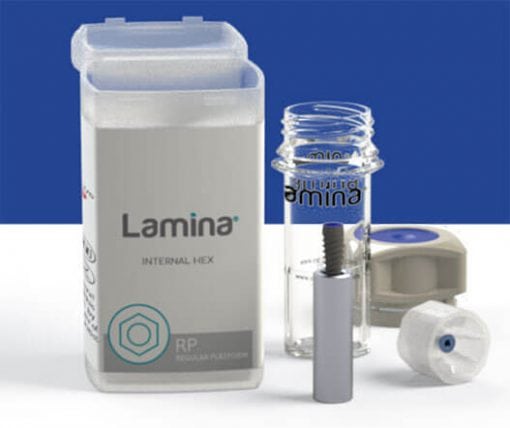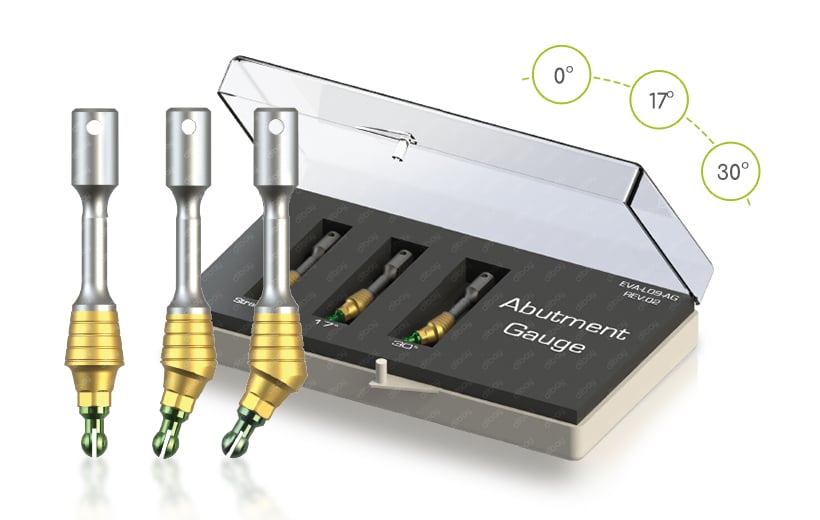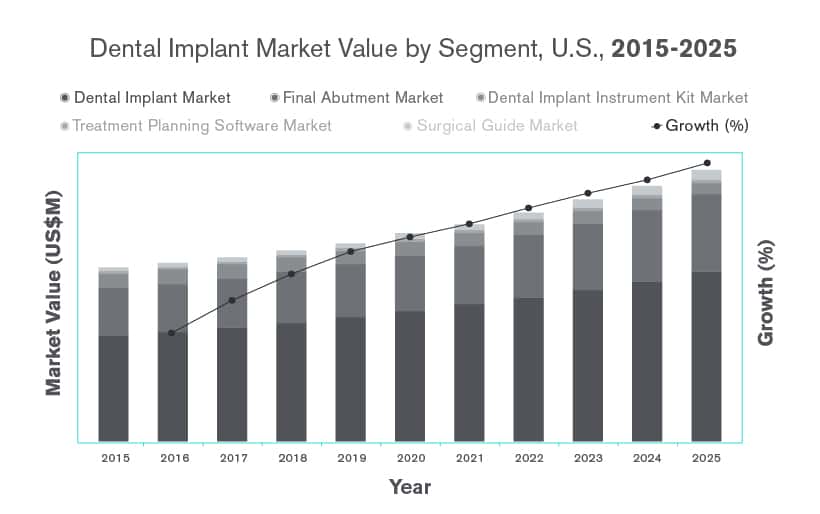
The internal hex implant connection is the most popular dental implant connection on the market today. It has been adopted by most dental professionals as the preferred implant connection over its predecessor, the external hex. Developed with the purpose of addressing clinical complications experienced with the external hex, the internal hex was considered a revolutionary design over its external counterpart and is now considered the ‘industry standard.’
Some of the leading implant brands compatible with the internal hex connection include Alpha Bio Tec.®, Legacy™ by Implant Direct®, Biohorizons®, Zimmer®, Blue Sky Bio®, Lamina™ by Edison Medical™, Adin® and Noris Medical®.

The inward migration of the hex connection
The external hex connection started it all. Developed by Swedish orthopedic surgeon Per-Ingvar Brånemark and serving as the connection in the first modern-day implant system, the external hex holds an important place in the history of dental implantology. However, certain intrinsic problems with the design of the external hex caused rise to complications with the implant system and drove scientists to ultimately develop the internal hex connection.
The most commonly seen issue of the external hex is the risk of fatigue fractures and screw loosening. To keep a low profile in the mouth, external hex connections have the drawback that the hex height itself is shorter than ideal for optimal engagement between implant and abutment. Without proper surface contact, fatigue fracture, micromovements and screw-loosening can occur.
The internal hex system addressed this problem by the internalization of the hex, which gives a greater stability to lateral forces, limiting micromovements and reducing risk of a slowly expanding micrograp. With the new design of the internal hex, the mating components of the implant and abutment are located deep within the implant body, minimizing the amount of stress caused when external force is exerted on the restoration. The newly centralized location of the implant-abutment interface repositioned the system’s fulcrum, which not only improved stress stability, but also resulted in improved stability of the implant screw. Compared to the external hex connection, which in up to 54% of cases has been found to undergo screw loosening, the internal hex has an approximate 6% incidence of screw loosening. Another benefit of the internalization of the hex was an improved esthetic result due to the reduced height of the platform and the restoration thus sitting lower along the gumline.
The internal hex is not the only internal connection
The internal hex implant connection, as mentioned, is the most widely used among dental professionals. There are however, several options for internal connections that are not hex-shaped. The tri-lobe connection, consisting of an internal connection with three lobes, makes for a straight-forward, simple restoration due to the limited three options for placing the abutment. The tri-lobe, like the external hex, is a flat-on-flat connection, which by design has more internal space to aid in seating the abutment. Unlike a tapered connection, flat-on-flat connections exhibit no degree of taper which normally assist with a rigid, secure connection between implant and abutment. The placement of the abutment in a flat-on-flat scenario therefore requires much more finesse by the dentist to ensure that the connection clears. Due to this, this type of connection has a relatively high risk of backfiring, however, because of increased microgaps and an increased lateral pumping of saliva and bacteria into the connection, which sets the stage for infection.
The other alternative internal connection to the hex is the conical connection, which has some considerable advantages over the internal hex, and could potentially take its place as the industry’s go-to connection. With regard to the conical vs. flat-on-flat connection, when the abutment is placed in a conical connection, as the abutment is torqued down, a spreading effect between the implant and abutment enables a degree of cold welding to occur, unlike the flat-on-flat connection which if the implant is not opened correctly before abutment insertion, can create a void between the implant and abutment that can develop into a microgap. Comparing between the internal hex and the conical connection deserves a bit more attention, so let’s get into the nitty-gritty of where the internal hex falters and what sets the conical interface at an advantage over the internal hex.
The internal hex implant system compared with other connections
Despite efforts to alleviate the issue of micromovements, the slight disparities that can exist between the platform and connection in an internal hex system can in fact lead to micromovements within the restoration. With normal wear and tear, microgaps develop from these micromovements when the restoration is exposed to the lateral forces typical of daily actions such as biting and chewing. These daily behaviors also create a micropump, or pumping effect, between the tissues surrounding the implant and the surfaces of the implant that are exposed to those tissues. This pumping effect arises when the implant has too much space around it and can cause two issues that compromise the integrity of the restoration. The first is microbial leakage that can result in the colonization of undesirable bacteria around the implant site and lead to infection. The second is marginal bone loss around the implant site, which when severe enough, can require that the implant is remade.
The conical connection: bidding a final adieu to micromovements
A more recent evolution in platform interfaces is the conical connection. The geometry of this platform, which as the name implies, is conical, creates maximized stability. How? The reduction of the interface’s surface area compared to the internal hex, coupled with its root-shaped form, allows for a tighter, more secure fit of the abutment with the implant. The stability is enhanced by the cold welding that occurs when the system is set into place, locking the abutment and implant, which eliminates screw loosening and micromovements, and facilitates even stress distribution when the restoration is exposed to force. In the comparison of the conical connection vs. internal hex, there are undeniable advantages of the conical connection over the internal hex that come at no cost. So what does that mean for the future of the internal hex?
Is the internal hex here to stay?
The internal hex implant system, while exhibiting a range of advantages over the external hex, does have a strong competitor that threatens its place in the market: the conical connection. The internal hex is the most widely used connection in implant dentistry today, but a large reason for that may simply be the familiarity and comfort that most dental professionals have with this system. The move from the external hex to the internal hex connection took time, as does the migration of any industry standard from one product to another. However, without the need for any change in savoir-faire or special tools to convert to the use of the conical connection, it is most likely only time that is needed for the conical connection to become the leading connection of dental implant systems.










